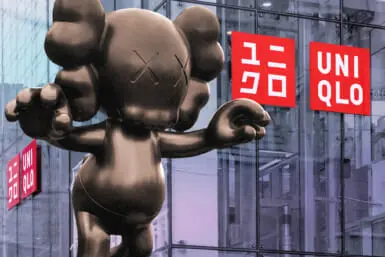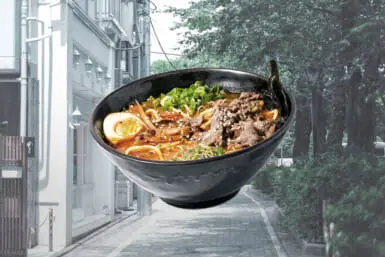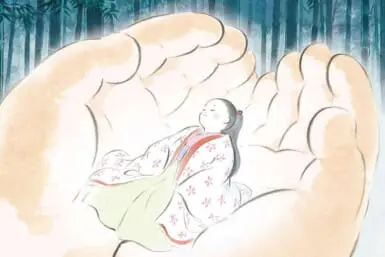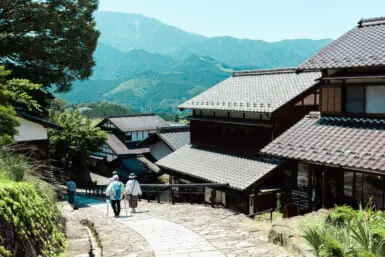As one year ends and another begins, there’s one particular custom that is prevalent across Japan: mochitsuki. It means “pounding rice cake” and on the surface it is exactly that. You whack some rice with a big mallet until it turns into a chewy snack that is often shaped like a ball. Yet, look deeper at the tradition, and you realize that mochitsuki is much more than that. It’s a heart-warming event that unites communities and joins families together.
The History of Mochitsuki
Mochitsuki is the traditional Japanese method of making the chewy rice cake known as mochi. The process involves steaming glutinous rice (mochigome) and then pounding it rhythmically with a wooden mallet (kine) in a large mortar (usu). After intense pounding, the rice turns into a smooth and elastic dough, which is then shaped into individual mochi pieces. The resulting mochi can be enjoyed fresh or used as an ingredient.
More Than Just Pounding Rice
Mochi have been around in Japan since at least the Wado era, in the early part of the eighth century. Historically, mochi was an offering given to the god of the new year, Toshigami-sama. It was not intended for consumption. At some point during the Heian era, mochi began to be used for a teeth hardening ceremony called Hagatame no Gishiki, which came from China and was meant to promote longevity. It was also used to decorate homes around New Year, which coincided with the Hagatame no Gishiki ceremony. This tradition continued into the Edo period.
Nowadays, many shrines and community centers host mochi-making events as a way to bring people together to eat mochi for the new year.
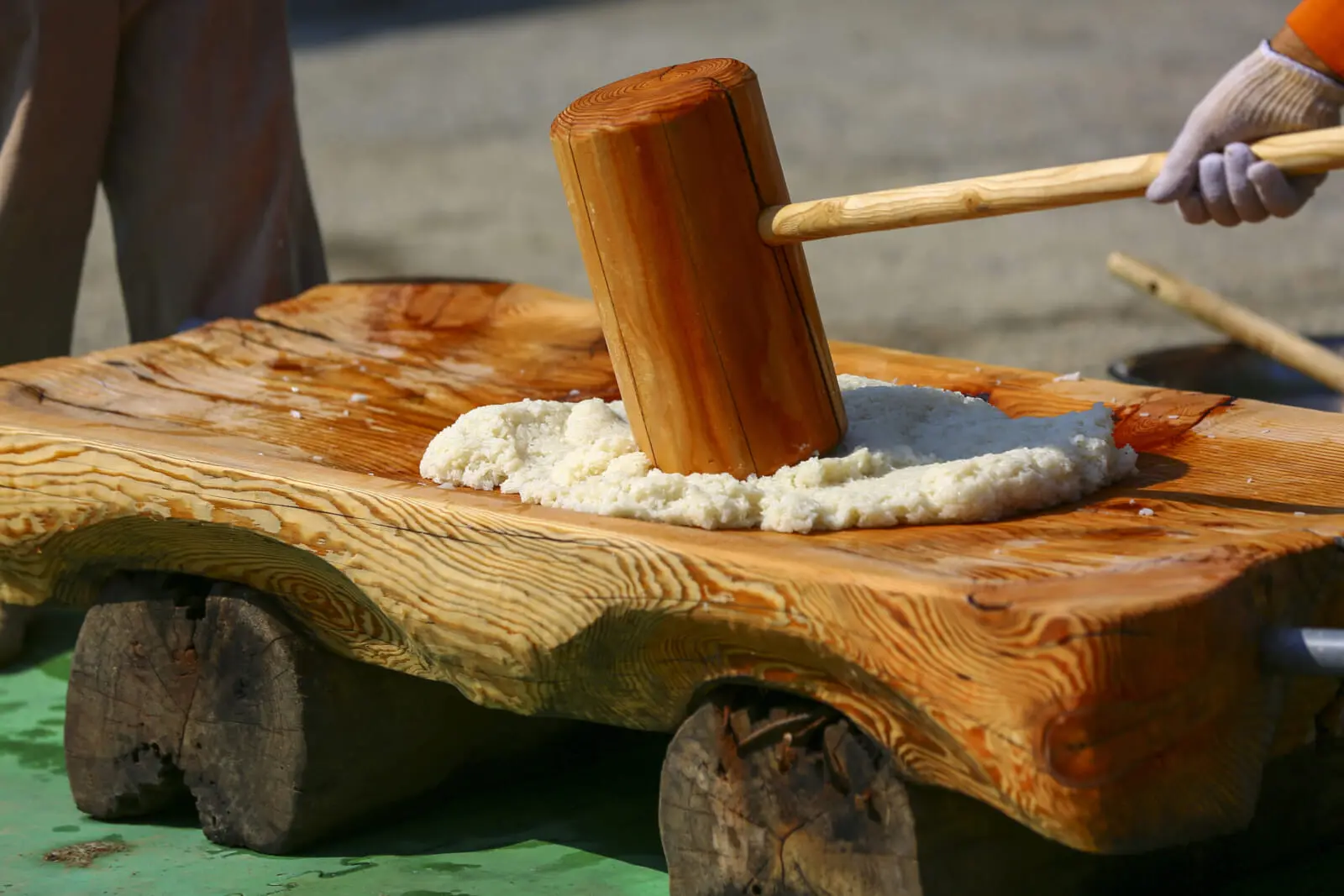
Tools Used in Mochitsuki
Mochitsuki requires two particular tools. Once you have these and a bag of rice, anyone can try mochitsuki at home.
Kine: A large wooden mallet used to pound the rice. Participants take turns wielding it, applying strength and rhythm to achieve the ideal consistency.
Usu: A hefty mortar, traditionally carved from stone or wood, where the rice is pounded. The usu’s sturdy design means it can withstand the repeated impact of the mallet.
Types of Mochi Enjoyed During the New Year
There are several types of mochi that are typically consumed around the time of the Japanese New Year, a period known as Oshogatsu. Mochi made using the mochitsuki method can be used for the mochi dishes below.
- Ozoni: This is a savory soup featuring mochi and vegetables. The ingredients vary based on the region, and sometimes even the household. Some places prefer their ozoni simple, with mochi and a few leaves of a parsley-like herb called mitsuba, while others may pop a variety of vegetables and even fish or meat inside.
- Kinako Mochi: This is a freshly toasted mochi topped with roasted soybean flour (kinako) and sugar.
- Kagami Mochi: This is the decorative mochi displayed during New Year’s celebrations, symbolizing family unity and prosperity. You will often see an orange on top.
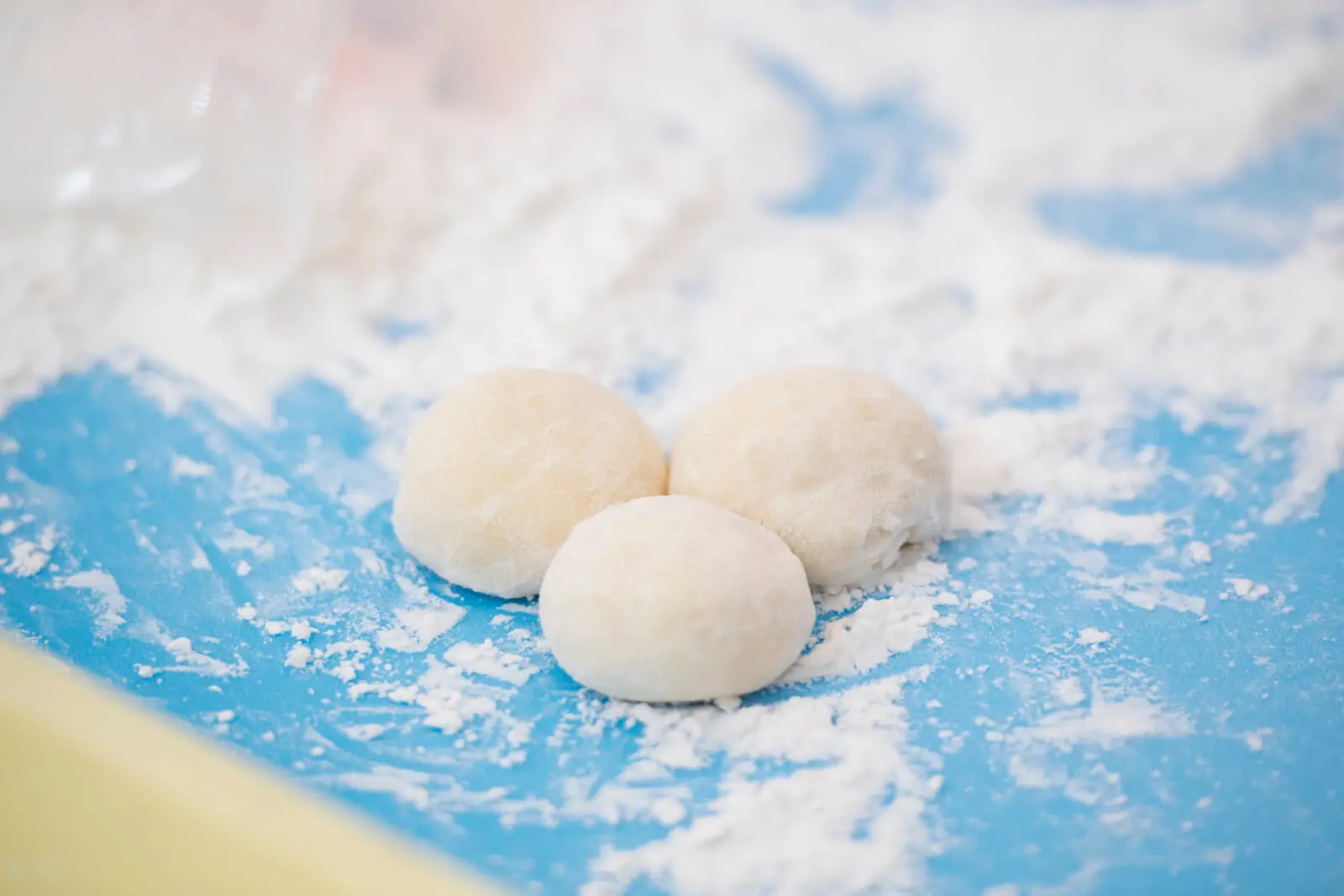
Where To Experience Mochitsuki in Tokyo
If you’re in Tokyo during the New Year season, there are several places to have a go at mochitsuki yourself.
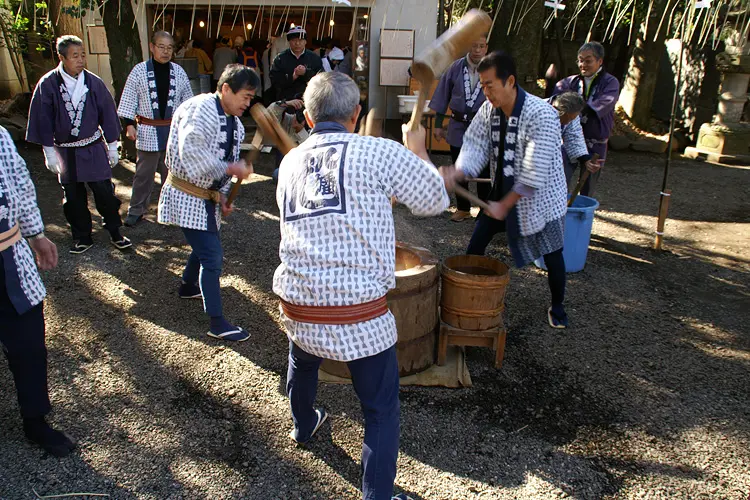
Mochitsuki at Yoyogi Hachimangu Shrine
Bash some rice at Yoyogi Hachimangu, a famous Shinto shrine near Yoyogi Park. This sweet community event is a great way to experience an ages-old Japanese custom, and work up a sweat while you're at it!
| Date & Time | Jan 31, 2025・10:00-14:00 |
| Price | Free |
| Location | Yoyogo Hachimangu |
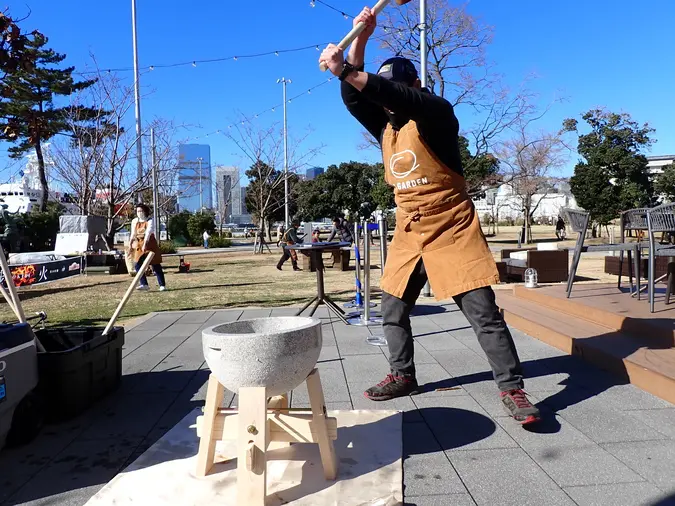
Spring Mochitsuki Event at Honshouji
This tiny Shinto shrine in northern Shinagawa area is holding its annual mochitsuki event. This event requires prior sign-up so everyone gets a go.
| Date & Time | Feb 2, 2025・11:00~ |
| Price | ¥2,000 |
| Location | Honshoji |
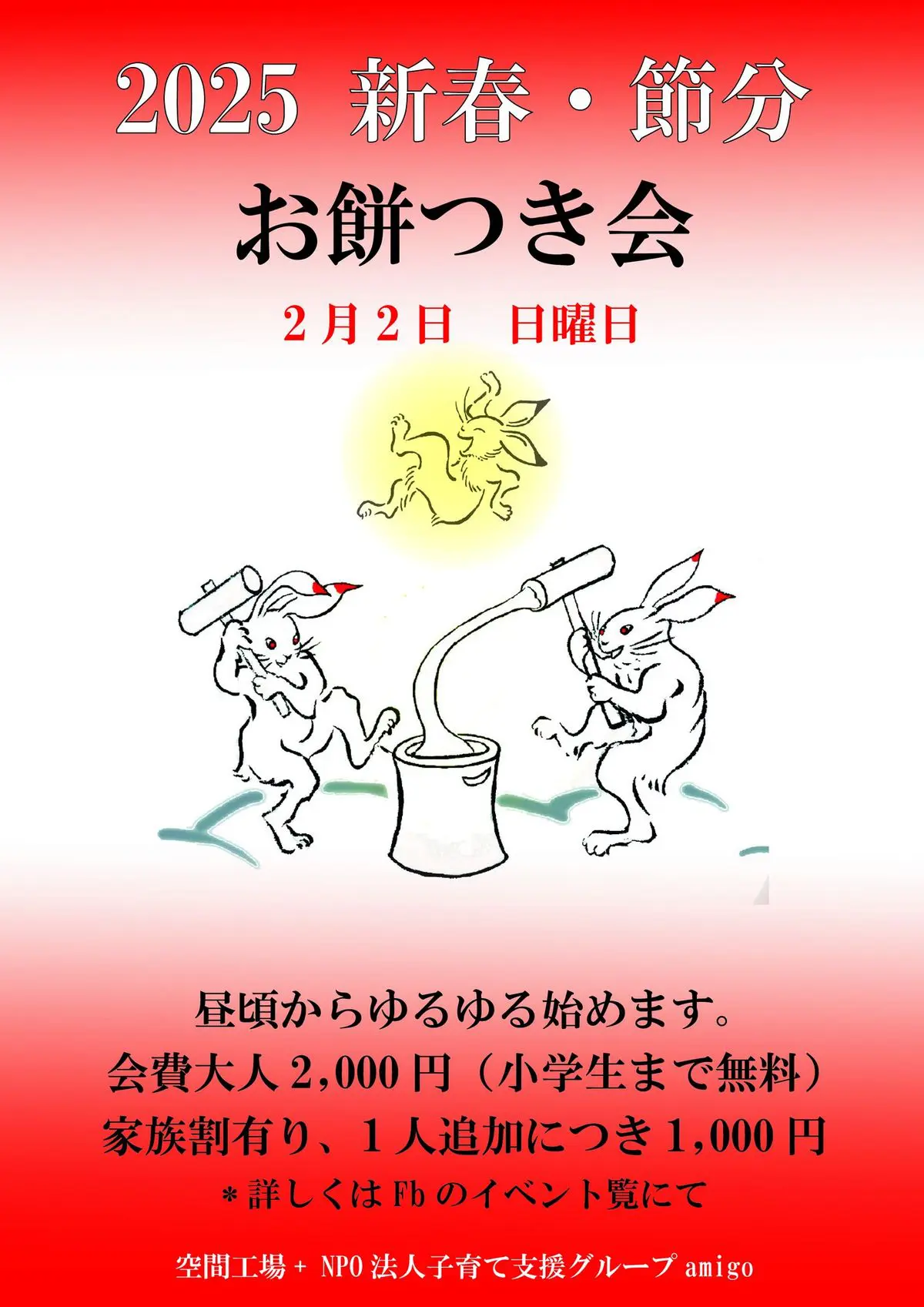
Mochitsuki in Setagaya
This NPO charity-run mochitsuki festival combines two events in one. Once you've pounded the rice to make mochi, it's free mochi for all, with a range of toppings and ways to eat.
| Date & Time | Feb 2, 2025・12:00~ |
| Price | ¥2,000 |
| Location | Apartment A1 |
| More Info | ¥1,000 for extra family members | Elementary school and under: free |
Tips for Participating in Mochitsuki
- Follow Instructions: Listen carefully to event organizers to ensure safety, especially when using the kine.
- Take turns: Don’t hog the kine. Everyone wants a turn.
- Enjoy the Mochi: Don’t miss the chance to try the fresh mochi you’ve helped create.



